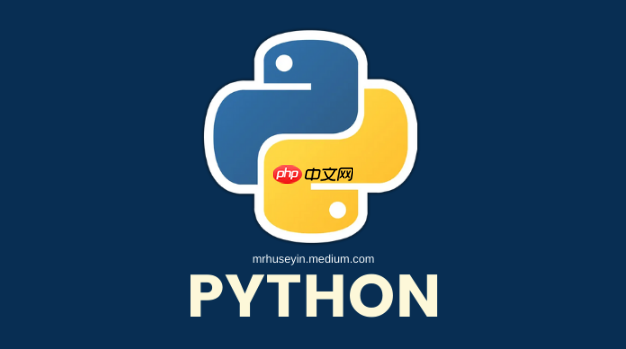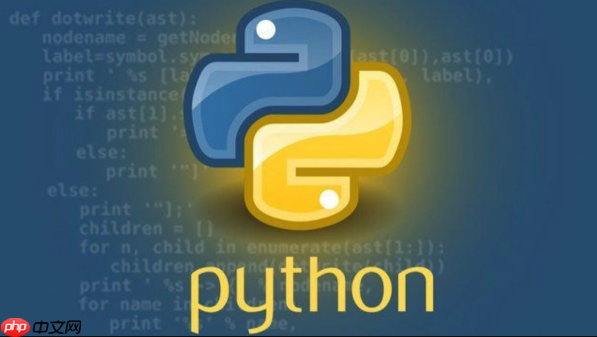python程序读取文本乱码的核心原因是编码不匹配,解决方法包括:1.明确输入/输出编码,确保读取时使用正确的编码格式;2.使用decode()将字节转为字符串,指定正确的编码参数;3.使用encode()将字符串转为字节以便存储或传输;4.采用错误处理策略如'strict'、'ignore'、'replace'、'backslashreplace'等应对无法解码的数据;5.使用chardet库自动检测编码,结合常用编码尝试列表提高解码成功率。

处理Python中的编码问题,核心在于理解字符编码的本质,并学会如何在字节(bytes)和字符串(str,即Unicode)之间正确转换。这通常意味着你需要知道数据的原始编码,然后使用
decode()
encode()

解决编码问题,我们首先要明确一个基本事实:Python 3内部所有字符串都是Unicode,而文件、网络传输或磁盘上的数据都是字节。所以,你的任务就是正确地在两者之间架起桥梁。
decode()
bytes.decode(encoding, errors='strict')
encoding
encode()
str.encode(encoding, errors='strict')
errors
'strict'
'ignore'
'replace'
'backslashreplace'
# 示例:处理一个未知编码的文件
import chardet # 这是一个外部库,需要 pip install chardet
def safe_decode(byte_data, preferred_encodings=['utf-8', 'gbk', 'latin-1']):
"""尝试多种编码解码,并使用 chardet 进行猜测"""
for enc in preferred_encodings:
try:
return byte_data.decode(enc)
except UnicodeDecodeError:
continue
# 如果常用编码都失败了,尝试用 chardet 猜测
detection = chardet.detect(byte_data)
if detection and detection['confidence'] > 0.8: # 信心度高才采纳
try:
return byte_data.decode(detection['encoding'], errors='replace')
except UnicodeDecodeError:
pass # 猜测的也可能不对,或有部分错误
# 实在不行,就用替换策略,至少能读出来大部分内容
print("警告:未能完全识别编码,使用 'replace' 策略解码。")
return byte_data.decode('utf-8', errors='replace')
# 模拟一个乱码文件
# with open('garbled.txt', 'wb') as f:
# f.write('你好,世界!'.encode('gbk'))
# 读取文件并尝试解码
# with open('garbled.txt', 'rb') as f:
# raw_bytes = f.read()
# decoded_text = safe_decode(raw_bytes)
# print(decoded_text)这问题问到心坎里了,我个人也曾被各种乱码搞得焦头烂额。乱码,或者说“Mojibake”,本质上就是你用了一种编码方式去“解读”了另一种编码方式的数据。就好比你拿着一本用中文写的书,却非要用日文的语法和词汇去理解它,结果自然是一头雾水。
立即学习“Python免费学习笔记(深入)”;

常见的原因有:
open()
encoding
utf-8-sig
要解决这些问题,关键在于“知己知彼”。明确数据的来源编码是第一步,然后才是对症下药地进行
decode()

当你不确定文本的编码类型时,处理起来确实棘手,这就像是盲人摸象。但Python社区有一些非常实用的工具和策略可以帮助你。
chardet
chardet
import chardet
# 假设 some_bytes 是你从文件或网络读取到的字节数据
some_bytes = b'\xc4\xe3\xba\xc3\xca\xc0\xbd\xe7\xef\xbc\x81' # 可能是GBK编码的“你好,世界!”
detection = chardet.detect(some_bytes)
print(detection)
# 输出可能类似:{'encoding': 'GB2312', 'confidence': 0.99, 'language': 'Chinese'}
if detection and detection['confidence'] > 0.8: # 只有当置信度高时才采纳
try:
decoded_text = some_bytes.decode(detection['encoding'])
print(f"成功解码:{decoded_text}")
except UnicodeDecodeError:
print("chardet 猜测的编码也未能完全解码。")需要注意的是,
chardet
尝试常用编码: 在使用
chardet
chardet
raw_data = b'\xcc\xec\xb9\xfb\xca\xdc\xb3\xf6' # 假设是GBK的“测试输出”
encodings_to_try = ['utf-8', 'gbk', 'latin-1', 'big5']
for enc in encodings_to_try:
try:
text = raw_data.decode(enc)
print(f"成功使用 {enc} 解码: {text}")
break # 成功后就跳出循环
except UnicodeDecodeError:
print(f"尝试 {enc} 失败...")
continue
else: # 如果所有尝试都失败了
print("所有常用编码尝试失败,考虑使用错误处理策略。")使用错误处理策略作为兜底: 当你实在无法确定编码,或者数据本身就存在部分损坏时,
errors
errors='replace'
errors='ignore'
errors='backslashreplace'
\xNN
个人经验来看,
chardet
errors='replace'
Python在
decode()
encode()
errors
'strict'
UnicodeDecodeError
UnicodeEncodeError
'ignore'
'replace'
'backslashreplace'
\xNN
\uNNNN
\UNNNNNNNN
'xmlcharrefreplace'
encode()
{
'namereplace'
encode()
\N{CHARACTER NAME}在实际项目中,我发现
'strict'
'replace'
'backslashreplace'
以上就是Python如何处理带编码问题的文本数据?的详细内容,更多请关注php中文网其它相关文章!

每个人都需要一台速度更快、更稳定的 PC。随着时间的推移,垃圾文件、旧注册表数据和不必要的后台进程会占用资源并降低性能。幸运的是,许多工具可以让 Windows 保持平稳运行。

Copyright 2014-2025 //m.sbmmt.com/ All Rights Reserved | php.cn | 湘ICP备2023035733号